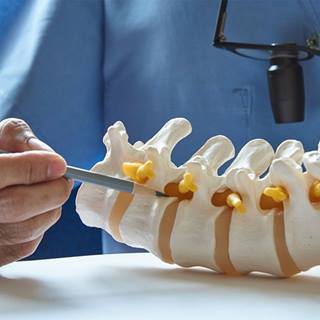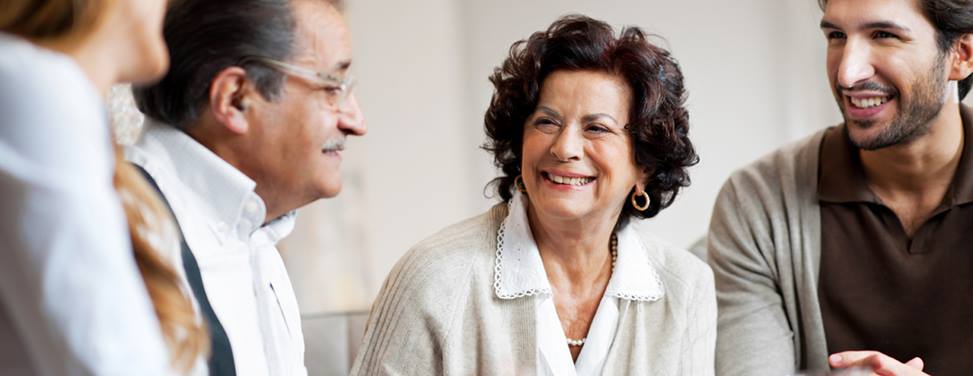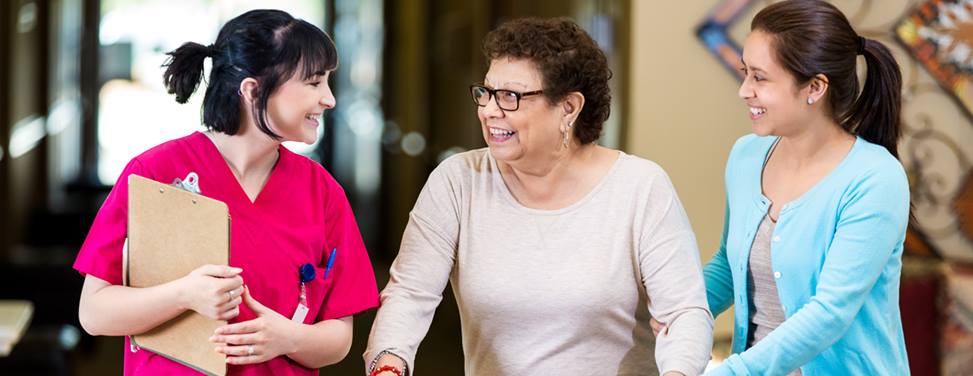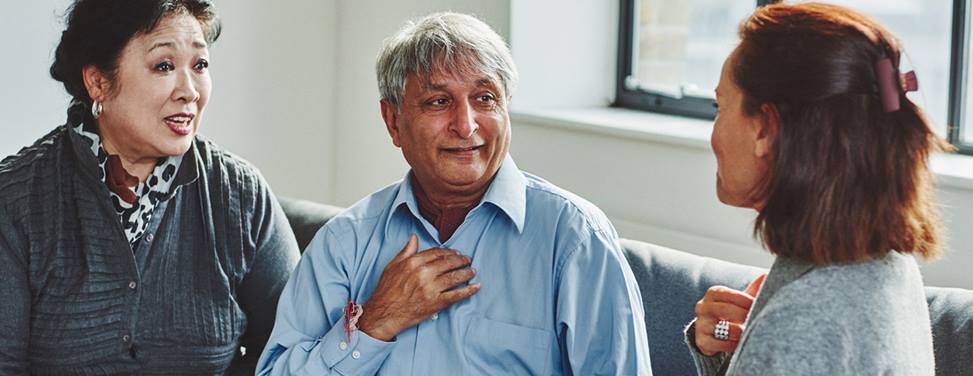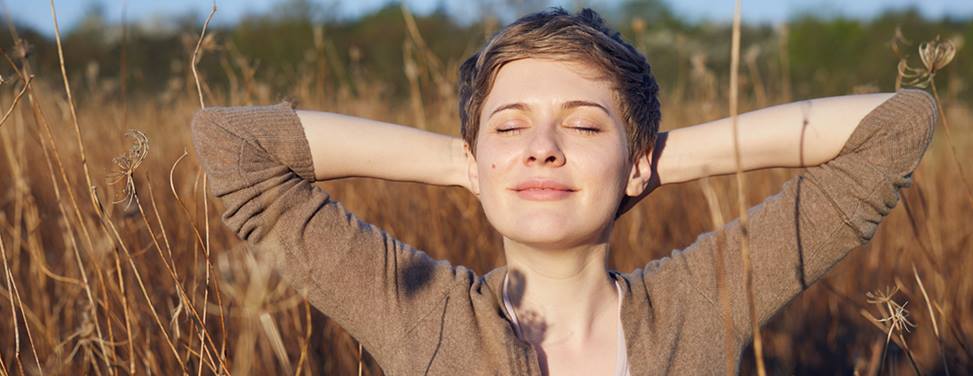Lumbar Disc Herniation
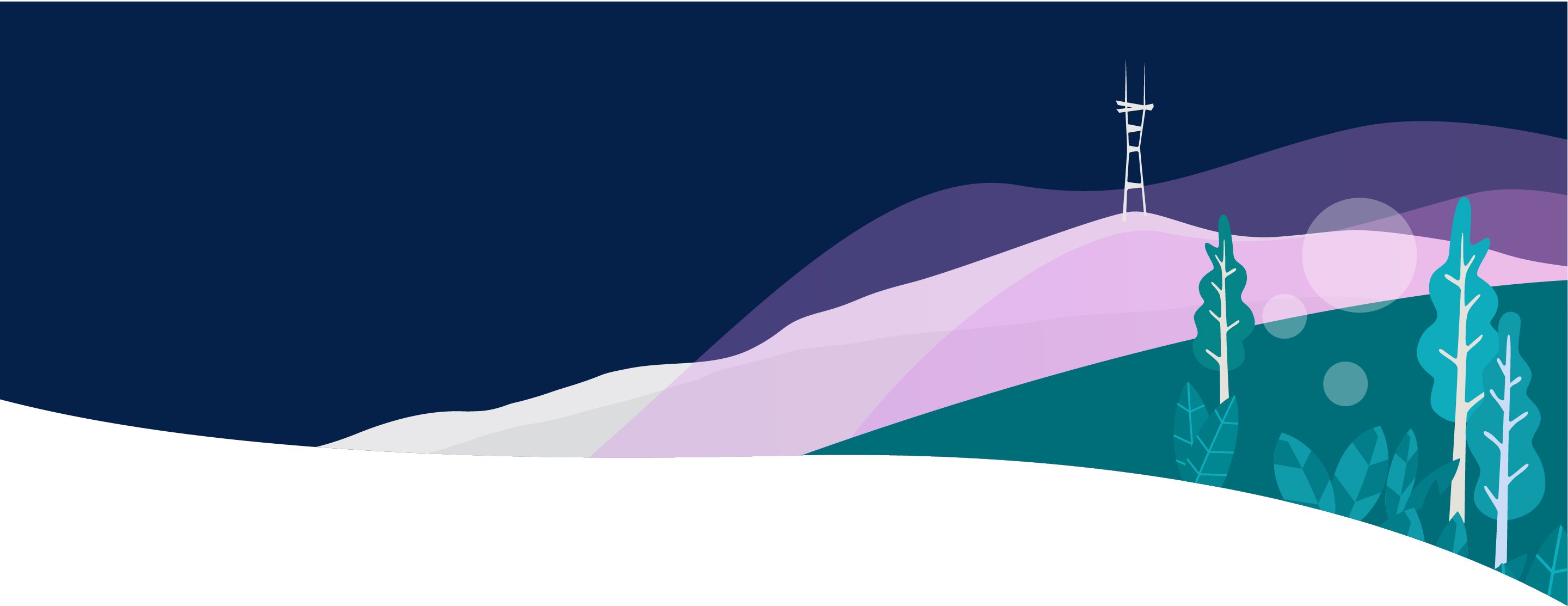
Overview
The lumbar spine consists of the five vertebrae in the lower part of the spine, each separated by a disc, also called a lumbar disc. The lumbar vertebrae are the biggest and strongest of the spinal bones. The discs in this part of the spine can be injured by certain movements, bad posture, being overweight and disc dehydration that occurs with age.
Risk of lumbar injury increases with each vertebrae down the spinal column because this part of the back has to support more weight and stress than the upper spinal bones. The lumbar disc is the most frequent site of injury in several sports including gymnastics, weightlifting, swimming and golf, although athletes in general have a reduced risk of disc herniation and back problems.
Our Approach to Lumbar Disc Herniation
UCSF is home to one of the country's largest centers dedicated to evaluating and treating spinal disorders, such as lumbar disc herniation. Patients have access to the most up-to-date diagnostic imaging techniques as well as innovative treatments that are not widely available. Our team includes world-renowned specialists in neurosurgery, orthopedic surgery, neurology, pain management, physical therapy, psychiatry, radiology and rheumatology. These experts work together to personalize a plan for each patient.
Conservative treatment for lumbar disc herniation is usually successful over time. It combines rest, medications and other therapies for alleviating pain (ultrasound, massage and transcutaneous electrical nerve stimulation), physical rehabilitation, and education on proper posture and stretching. About 10 percent of adult patients will need surgery. Our team's expertise in state-of-the-art surgical repair and rehabilitation results in less time under anesthesia, faster recovery and, ultimately, a better quality of life. We also offer artificial disc replacement surgery, a newer option that may benefit patients who don't respond to other treatments.
Awards & recognition
-

Among the top hospitals in the nation
-
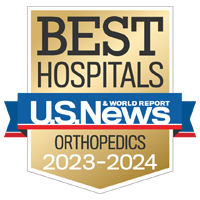
One of the nation's best for orthopedic care
-
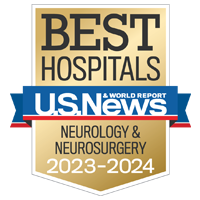
Best in California and No. 2 in the nation for neurology & neurosurgery
Signs & symptoms
Symptoms of disc herniation in the lower back are slightly different from symptoms in the cervical (link) or thoracic (link) parts of the spine. The spinal cord ends near the top lumbar vertebrae but the lumbar and sacral nerve roots continue through these spinal bones. A lumbar disc herniation may cause:
- Lower back pain
- Pain, weakness or tingling in the legs, buttocks and feet
- Difficulty moving your lower back
- Problems with bowel, bladder or erectile function, in severe cases
Diagnosis
Initial diagnosis of lumbar herniation generally is based on the symptoms of lower back pain. Your doctor will examine your sensation, reflexes, gait and strength. Your doctor also may suggest the following tests:
- X-ray High-energy radiation is used to take pictures of the spine.
- Magnetic Resonance Imaging (MRI) An MRI provides detailed pictures of the spine that are produced with a powerful magnet linked to a computer.
- Computed Tomography (CT) Scan A CT scan uses a thin X-ray beam that rotates around the spine area. A computer processes data to construct a three-dimensional, cross-sectional image.
- Electromyography (EMG) This test measures muscle response to nervous stimulation.
Treatments
Conservative treatment of lower disc pain usually is successful over time. It includes:
- Pain medication or pain therapies such as ultrasound, massage or transcutaneous electrical nerve stimulation
- Anti-inflammatory medication such as aspirin, ibuprofen and acetaminophen
- Physical therapy
- Steroid injections
- Education in proper stretching and posture
- Rest
However, if your pain doesn't respond to conservative treatment in two to four weeks, your condition affects your bowel or bladder function, or if it threatens permanent nerve damage, your doctor may suggest surgery. Modern methods of surgery allow some spine operations to be performed through tiny incisions using miniature instruments while a microimaging instrument called an endoscope is used to view the surgery site.
The surgery usually includes removing the part of the disc that has squeezed outside its proper place, called a discectomy. The surgeon also may want to remove the back part of the vertebrae, called the lamina, in a laminectomy; or to surgically open the foramen, the holes on the side of the vertebrae through which the nerves exit, in a foramenotomy. Only about 10 percent of adult lumbar disc patients require surgery and even fewer children and adolescents.
UCSF Spine Center orthopedic surgeons also are investigating the effectiveness of an implant that may replace damaged lower back discs.
UCSF Health medical specialists have reviewed this information. It is for educational purposes only and is not intended to replace the advice of your doctor or other health care provider. We encourage you to discuss any questions or concerns you may have with your provider.






